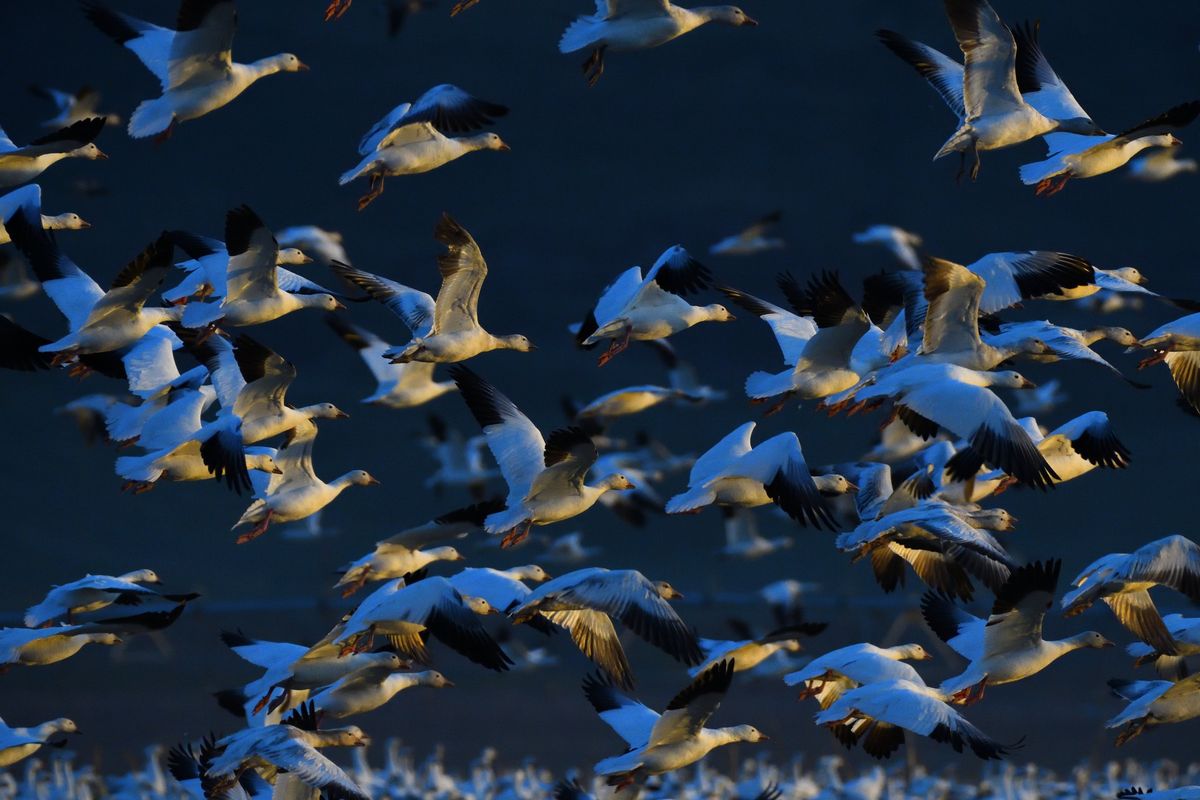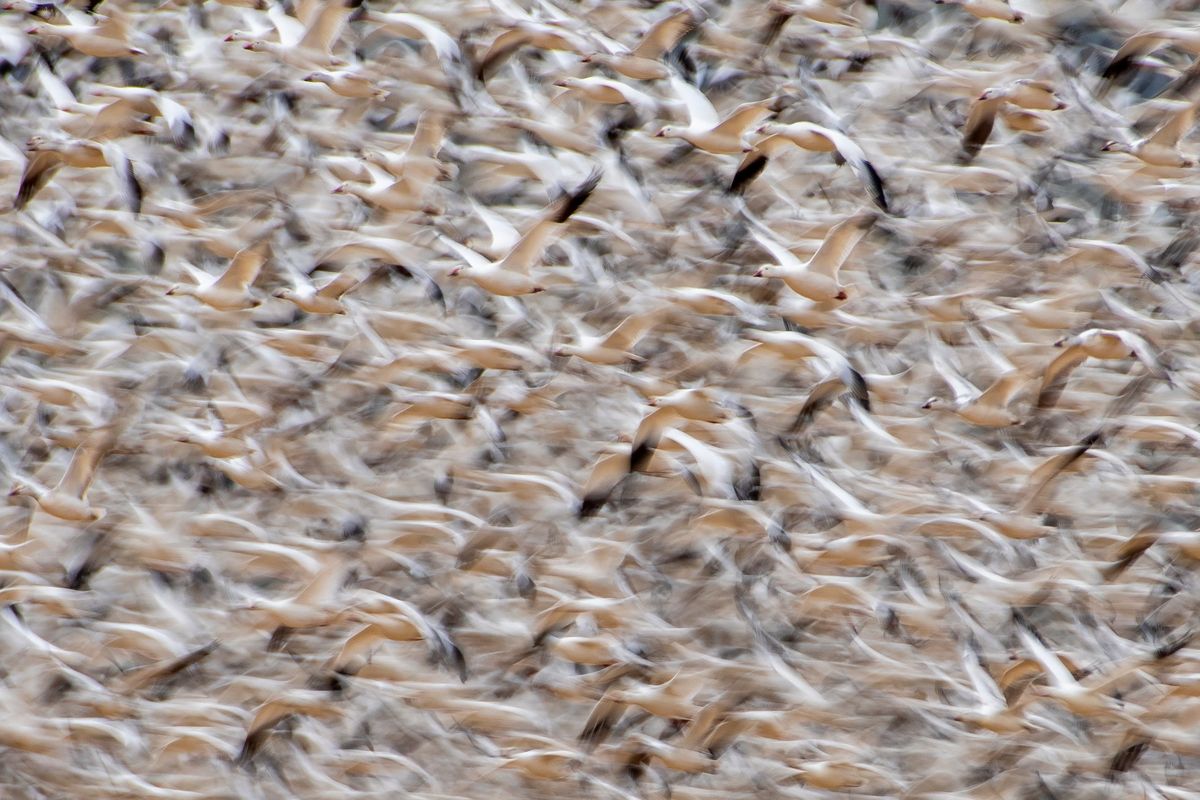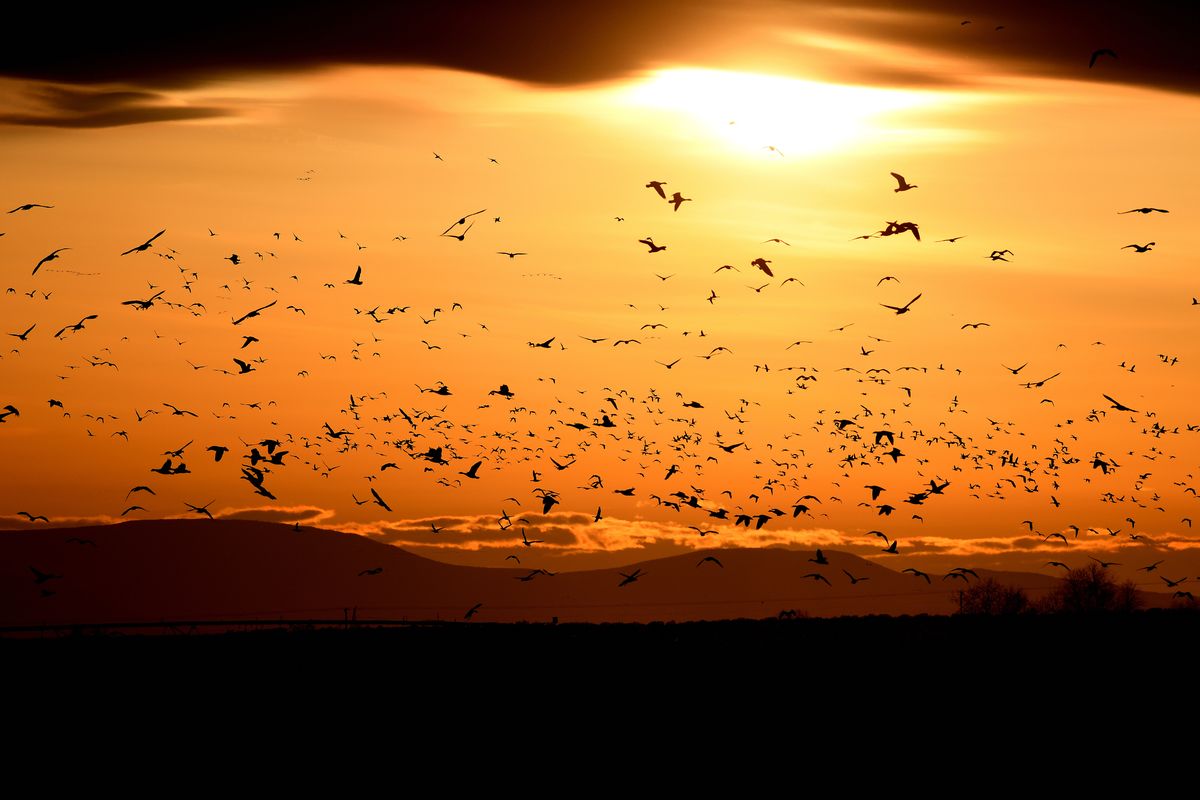Magnificent migration: Thousands of snow geese pass through Washington each spring
Pictured at top: Hundreds of snow geese and northern pintails stand out against the sunset on Saturday at the Columbia National Wildlife Refuge near Othello. (COLIN TIERNAN/THE SPOKESMAN-REVIEW)Buy a print of this photo
At first glance, it looks like chaos.
Thousands of geese take flight within seconds of each other, honking their hearts out and turning the sky into a rippling wave of white and black feathers.
It looks like a terrible traffic jam waiting to happen. But somehow, through some invisible agreement, they coordinate. They lift off in an orderly corkscrew, then fly a few hundred yards east before spiraling down to the ground again.
Thousands of snow geese stopped at a cornfield Saturday and Sunday at the Columbia National Wildlife Refuge south of Moses Lake. The birds pass through Washington twice every year on their awe-inspiring migration to and from the Arctic.
Colin Tiernan / The Spokesman-Review
Some snow geese spend their winters in Western Washington, but the birds passing through the Columbia National Wildlife Refuge likely came from as far south as Mexico. Every spring, millions of the birds spend three months migrating nearly 3,000 miles to their breeding grounds. Many wildlife lovers argue it’s the most impressive bird migration in North America.
A hundred years ago, it was hardly a migration at all.
Around 1900, there were an estimated 2,000 to 3,000 snow geese left. Modern population estimates vary, but a conservative count puts today’s population at more than 6 million.
Much of that population growth has occurred during the last half century. There are a few reasons for the explosion, but the expansion of agricultural lands is a leading factor. Ag ground, often full of spilt grain and corn, makes for good habitat and forage.
Snow geese have become so plentiful they’re degrading their own breeding habitat in the Arctic tundra.
Governments have reduced hunting restrictions in an effort to remove more birds.
But even if there are too many snow geese, they’re a magnificent sight to behold as they noisily pass through Washington every spring.


